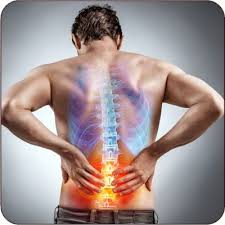Introduction
Acute muscle pain can strike suddenly due to injuries, overuse, or strain. Whether it’s from an intense workout, an accidental sprain, or muscle tension from stress, finding fast relief is crucial. Effective treatments range from home remedies to medical interventions. This guide explores proven strategies for alleviating acute muscle pain quickly.
Understanding Acute Muscle Pain
Acute muscle pain, also known as myalgia, occurs when muscles become inflamed or irritated due to stress, trauma, or an underlying condition. It is different from chronic pain, as it typically lasts for a short period and resolves with proper care. Common causes include:
- Overuse or strain: Engaging in strenuous physical activities without proper warm-up.
- Injury: Accidents, falls, or sports-related trauma.
- Poor posture: Sitting or standing in an incorrect position for prolonged periods.
- Tension and stress: Emotional stress can cause muscle tightness.
Immediate Steps for Quick Relief
1. Rest and Protect the Muscle
The first step in managing acute muscle pain is to rest. Avoid activities that aggravate the pain and protect the injured area from further strain.
2. Apply Ice Therapy
Applying ice to the affected muscle reduces inflammation and numbs pain. Follow these guidelines:
- Wrap an ice pack in a cloth to prevent skin irritation.
- Apply for 15–20 minutes every hour for the first 24–48 hours.
3. Use Heat Therapy
After 48 hours, heat therapy helps relax stiff muscles and improves blood flow. Apply a heating pad or take a warm bath to ease discomfort.
Medical Treatment
Prescription Medication
Some prescription medications are designed to support musculoskeletal health by addressing pain and discomfort associated with muscle conditions. Healthcare providers prescribe these medications based on individual needs and medical history.
One example is Pain O Soma 500mg, which is commonly used to manage acute muscle pain and discomfort. It works as a muscle relaxant, helping to relieve pain by blocking pain signals between the nerves and the brain. Recommended for individuals experiencing muscle spasms, injuries, or musculoskeletal disorders, Pain O Soma 500mg promotes relief and improved mobility, allowing users to regain comfort and enhance their daily activities.
Over-the-Counter Pain Relievers
Nonsteroidal anti-inflammatory drugs (NSAIDs) like ibuprofen or naproxen help reduce inflammation and pain. Acetaminophen is another option if inflammation isn’t a concern.
Massage and Stretching
1. Gentle Massage
A light massage improves circulation, reduces stiffness, and promotes relaxation. Use essential oils like peppermint or eucalyptus for added relief.
2. Stretching Exercises
Gentle stretches help relieve muscle tension and restore flexibility. Examples include:
- Hamstring Stretch: Sit on the floor with legs extended and reach forward.
- Neck Stretch: Tilt your head to each side to release tension.
- Shoulder Rolls: Rotate shoulders to improve mobility.
Hydration and Nutrition
Proper hydration and a balanced diet support muscle recovery. Consume water, electrolyte-rich drinks, and anti-inflammatory foods like turmeric, ginger, and omega-3-rich fish.
Topical Pain Relievers
Gels, creams, and patches containing menthol or capsaicin provide instant pain relief when applied directly to the sore muscle.
Alternative Therapies
1. Acupuncture
Acupuncture stimulates specific points on the body to promote healing and reduce pain.
2. Chiropractic Care
A chiropractor can help realign muscles and joints, relieving pain and tension.
3. Physical Therapy
For persistent pain, a physical therapist can design a personalized exercise program to prevent future injuries.
When to Seek Medical Attention
Seek medical help if:
- Pain persists for more than a few days.
- There is severe swelling, redness, or warmth around the muscle.
- You experience numbness or loss of function.
Conclusion
Acute muscle pain can be managed effectively with rest, ice, heat, stretching, and pain relief methods. Staying active, maintaining good posture, and using proper body mechanics can help prevent future muscle injuries. If pain persists, consult a healthcare professional for further evaluation and treatment.








